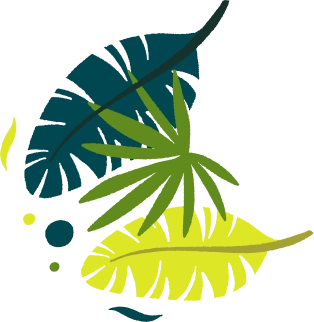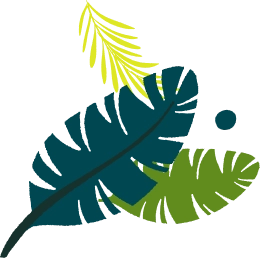


Draped in green, Vietnam’s jungles are a wonderland for adventurers with towering karst-covered rainforest (Phong Nha), steamy bamboo jungle (Cat Tien), and mangrove wetlands (Can Gio).
Each jungle is teeming with life: gibbons swinging high, gators lurking in hidden lakes, and ancient trees sheltering butterflies by the thousands. For example, Cat Tien National Park is known for “steamy jungle treks” and has endemic wildlife like bears and crocodiles.
We’ll take you through the must-see Vietnam jungle spots (from north to south), how to reach them, and tips to trek safely.
Vietnam has 30+ national parks, but some of the most jungly ones are easily accessible from major cities:
Phong Nha Ke Bang (Quang Binh): Fly/train to Dong Hoi (Quang Binh). Phong Nha town is just a few km away. It’s a UNESCO site known for massive caves hidden under primeval jungle.
Cuc Phuong (Ninh Bình): Just ~2 hours south of Hanoi by car. Buses from Hanoi or Ninh Bình city frequent the park entrance.
Cat Tien (Dong Nai): About halfway between HCMC and Da Lat by road. From Ho Chi Minh City (Saigon), take a bus or private car ~3-4 hours. The gates of Cat Tien open into true lowland rainforest.
Bach Ma (Thừa Thiên-Huế): Between Hue and Da Nang. Drive ~1.5-2 hours from either city.
Yok Don & Bu Gia Map (Tay Nguyen): Fly to Buon Ma Thuot (Dak Lak) or travel overland from HCMC (~8h drive) for these southern highland parks. Both are rugged Jungles near the Cambodian border.
U Minh Thuong (Ca Mau/Kien Giang): Located in the Mekong Delta. Travel to Rach Gia or Ca Mau (by road or boat) and take a local shuttle - it’s a boat ride into the mangroves.
Can Gio Mangrove (HCMC): Just 50 km south of Saigon. You can even take a boat tour from the city! Can Gio’s mangrove forest (a UNESCO biosphere) is the closest jungle to HCMC..
Each park usually has local buses, shuttles, or guided tours. For example, Cat Tien has regular tourist buses from Saigon. Always check in advance, especially for remote parks.
Exclusive Phong Nha Cave Tour Hung Thoong Expedition by Jungle Boss
Phong Nha Ke Bang (Central Vietnam): Home to the world’s largest cave systems under dense jungle. Trek aboveground on jungle trails, kayak in the Dark Cave, or join a multi-day Oxalis/JungleBoss cave expedition. Best visited in the dry season (Mar-Apr) when the weather's clear.
Pro tip: Book in advance with local guides (Oxalis or Jungle Boss) for the big caves like Son Doong and Hang Pygmy which are exclusive and not touristy like Paradise/dark caves.
Cuc Phuong (Northern Vietnam): Vietnam’s oldest park with ancient trees and endangered wildlife. Hike up Silver Cloud Mountain for views, and in May look out for the thousands of migrating butterflies - it’s a photographer’s dream. Check out the Primates Rescue Center here too.
a Waterfall in Bach Ma National Park in Vietnam
Bach Ma (Central Coast): Lush mountains between Hue and Danang. Hike a few hours to stream-fed waterfalls or up to the peak for a panoramic view of the South China Sea. The French-built bungalows along the way are charming relics.
The best time to visit is April-September for good weather.
a Large Crocodile in Shallow Waters of Cat Tien National Park
Cat Tien (South): Ideal for wildlife. Trek jungle trails at dawn to hear gibbons, then boat out to Bau Sau (Crocodile Lake) to see wild freshwater crocs sunning themselves. At night, take a guided safari - you might spot lorises, civets, or fireflies after dark. The park also has a Bear Rescue Center for injured wildlife. (Securing a ranger-led tour is recommended here.)
Nam Cat Tien
Nam Cat Tien: (Often used interchangeably with Cat Tien National Park by travelers, though technically a separate area) - famous for its rich bird life and Buddha’s temple remains. The highlight is still seeing those massive crocodiles up close at Bau Sau.
U Minh Thuong National Park
U Minh Thuong (Mekong Delta): Mystical swamps and mangroves in the Ca Mau peninsula. Explore by kayak through tangled waterways or take an elevated boardwalk trail. The park is famed for its wild honey: join local beekeepers to collect fresh honeycomb right from the trees.
Can Gio Mangrove Forest Near Ho Chi Minh City, Vietnam
Can Gio Mangrove (HCMC): Just an hour from the city, this UNESCO site is a living tidal forest. Spot a troop of 2,000 monkeys on Monkey Island, try “crocodile fishing” in Vam Sat, or climb Tang Bong observation tower for a 360° view of endless greenery. Don’t miss the bat conservation area with giant fruit bats.
Pu Luong Nature Reserve
Pu Luong (Thanh Hoa): Not your first guess, but this northern reserve combines mountainous jungle with terraced rice fields. Look for the rare white-cheeked langur or black bear on the trails. Hike between the ethnic Thai villages of Ban Don and Ban Hieu, with hot springs and hidden waterfalls as rewards.
Opening Hours & Fees: Most parks open ~8:00 AM and close by 5:00-6:00 PM. Entrance fees are quite low (often 20k-60k VND, roughly $1-3). Note: some activities (night trek, boat tour) have extra charges. Always verify current fees on the park’s website or at the gate.
Best Seasons: Dry season is best. In North/Central Vietnam, hike Nov-Apr to avoid rains. In the South (Mekong/Cat Tien), December-July is drier. Monsoons (Jul-Oct in the north/central, May-Nov in the south) mean muddy trails and flooded campsites - avoid these months if you want clear, safe conditions.
Weather Caution: Even in the dry season, afternoon showers can pop up. Wear quick-dry clothing. In the highlands (Bach Ma, Pu Luong), nights can get chilly - pack a light jacket. Always bring insect repellent (leeches and mosquitoes abound) and waterproof, slip-resistant boots.
Guides & Permits: Some areas like Cat Tien require a guide for deep jungle treks (plus the guide fee supports conservation). Hiring a local guide is wise anywhere - they know the trails, local wildlife behavior, and can get you to hidden spots. For off-road treks, you may need a ranger permit; check rules at the visitor center.
Amenities: Park facilities vary. Cat Tien, Cuc Phuong, and Bach Ma have basic bungalows or campsites; Pu Luong and others have simple homestays in villages. Bring snacks or buy at park shops (often limited to rice, instant noodles, water). Restrooms and potable water are usually near entrances, but deep in the park you might rely on streams (bring purification tablets). Cell service is spotty to none in jungles.
Packing Essentials: In addition to repellent and sturdy shoes, bring a hat, sunblock, flashlight or headlamp (for night walks) and a rain poncho. Keep gear minimal - Vietnam’s jungles are humid, so lightweight clothing and a good dry bag for electronics is recommended. Carry cash (only small ATMs at park offices) and ID with you.
Jungle Trekking in Vietnam Phong Nha Ke Bang National Park
7:30 AM: Arrive at Cat Tien park entrance, register and hire a ranger/guide.
8:00 AM: Start a jungle trek on the Trial Trail. Listen for the dawn chorus of gibbons and hornbills.
10:30 AM: Reach Crocodile Lake (Bàu Sấu). Board a canoe to slowly approach the lake’s sunning crocs under your ranger’s watch. (Keep your distance - they’re real crocodiles!)
12:00 PM: Picnic lunch by the lake or in a clearing. Watch for wild deer or pythons in the grass.
1:00 PM: Visit the Bear Rescue Station within the park (it rehabilitates rescued sun bears and moon bears). Observe the resting bears behind glass.
3:00 PM: (If doing an overnight tour) Set up camp or stay at park lodge. As night falls, join a night safari along a short trail - you’ll use lamps to spot scorpions, owls, or sleeping bats (the guide will handle torches). Night tours reveal the park’s nocturnal wildlife which I wouldn’t miss to be honest!
Departure: Next morning, leave after dawn or continue to drive back.
Phong Nha Tour of Botanic Garden With Mini Waterfall
8:00 AM: Depart Phong Nha town, hike into Phong Nha Cave (on foot or by boat). Explore the cathedral-like chambers and spot bats circling at dusk (if lucky).
11:00 AM: Head back to Phong Nha and hop on a jeep to Dark Cave. Zipline and swim into the cave’s mud pools (fun despite the name!).
1:00 PM: Lunch in town, then take a short trek (Easy Trail) through the jungle to Hang Tien or Botanic Garden to see monkeys and hornbills.
Wildlife Safety: Respect all animals. Don’t approach or feed them - even small monkeys can bite or carry disease. If you spot wildlife like bears or big cats, stay calm and slowly back away. Always walk in a group and follow ranger instructions.
Trail Awareness: Stick to marked paths. During rain, trails get slippery - use hiking poles and slow your pace. Watch your step on rope bridges or muddy crossings.
Insects & Plants: Wear long sleeves/pants at dawn/dusk - mosquitoes are most active then. In lowland mangroves (Can Gio, U Minh), you might encounter leeches - check your socks after wading. If bitten by a jungle leech, use salt or a flame to remove it (no pulling!). Also beware of prickly plants; some ferns and vines have tiny hooks.
Cultural Respect: If trekking through or near ethnic villages (Pu Luong, Cat Tien outskirts, etc.), ask before entering private areas. It’s polite to greet villagers with “Xin chào!” and thank them “Cảm ơn” if they interact.
Weather Caution: Never hike in a typhoon or major storm. In the wet season, rivers can swell rapidly - don’t cross flooded streams. Check local forecasts at ranger stations.
Permits & Regulations: Don’t remove any plants, animals, or even feathers/mushrooms from parks. Leave no trash - carry out all waste. South Vietnam still has scattered wartime landmines off trails, but well-marked paths in parks are cleared. Avoid venturing off-path solo.
Guidance: Carry a paper map or offline GPS (guides are ideal, but if solo, let someone know your planned route and return time).
a Beautiful Waterfall in Bach Ma National Park
What should I pack for a jungle trek in Vietnam?
Pack light but prepared: sturdy waterproof shoes, long pants/shirts, insect repellent, sunscreen, a hat, reusable water bottle, raincoat, flashlight, and basic first-aid. Food/snacks and extra cash are wise. Many recommend hiring a local guide rather than risk it alone.
Do I need a guide?
While not always legally required, a local guide enhances safety and experience. Guides know the jungle paths, animal habits, and safe camping spots. In places like Cat Tien or Cần Giờ, guides are mandatory for certain tours (especially night safaris).
What wildlife will I see?
Monkeys (gibbons, macaques), otters, birds (hornbills, kingfishers), reptiles (crocodiles, snakes), and maybe elephants or bears in protected zones. Rare sightings include pangolins or leopards, but that’s very uncommon. U Minh has frogs and water snakes; Yen Tu (not listed above) has full jungles.
Are there dangerous animals?
None normally attack humans unprovoked. The main cautions are snakes (wear boots), leeches, and Asian scorpions. Crocodiles live in lakes like Bau Sau; you’ll be in a boat if you go out there (no casual swims).
When is the best time of day to visit?
Early morning and late afternoon (golden hours) are best for wildlife activity and photography. Noon can be hot and many animals hide. Night tours reveal creatures like owls, geckos, and insects you wouldn’t see by day.
Can I camp in the Vietnam jungles?
Yes, most parks allow camping. Bring your own tent/sleeping bag or rent. Choose official campgrounds or safe flat areas (avoid dry riverbeds in the rainy season). Some parks offer simple bungalows if you prefer not to rough it.
How do I know I’m in a real jungle and not just woods?
Real jungle means evergreen tropical forest with multiple canopy layers. Phong Nha, Cat Tien, and Cần Giờ are classic “rainforest” environments. If you see palm trees and bamboo, you’re in a mangrove or secondary forest. The key is dense foliage and high humidity.
Get the latest information about our tours and special offers!